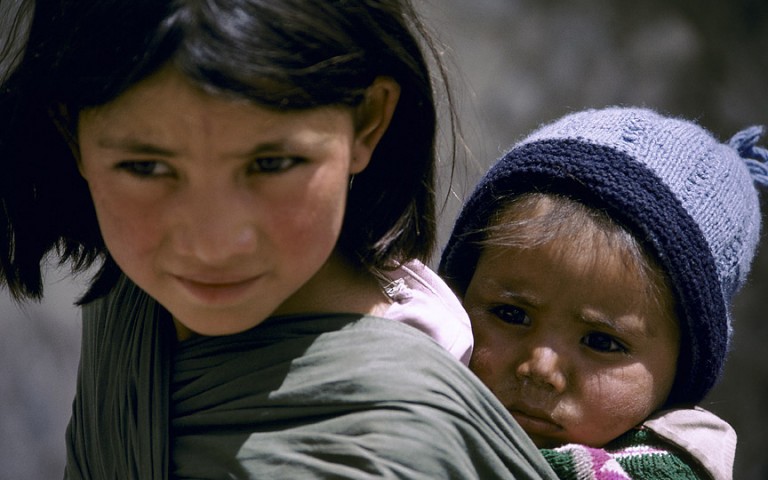
World Bank / Curt Carnemark
Have you ever heard the phrase “it takes a village to raise a child”? This has been the long-standing belief among anthropologists in figuring out how early humans were able to deal with the rigours of survival. However, a new study is challenging that belief, at least when it comes to early humans.
Early in human evolution, the way that children were taken care of underwent a transition. Mothers initially had to focus all their efforts on raising and weaning a single child at a time, much like the great apes still do today, while receiving little help from other adults. At some point, this changed, our human ancestors started working together and females started caring for other females’ offspring as well. The conventional wisdom is that that was a one-step transition, but a new study suggests that in between those two phases, there was time in human evolution when a mother’s older children helped to raise their younger siblings, and which continues to present day.
Since there is no fossil record that would demonstrate this hypothesis, the researchers, led by Karen Kramer, an anthropologist at the Unversity of Utah in the US, posed the problem as an economic model and created a computer simulation. They started with the early model of a single female raising one child at a time for 5-6 years and changed the parameters to end up with the present-day model of weaning children between 2-3 years and having multiple children around at the same time.
“We simulated an economic problem that would have arisen over the course of human evolution. As mothers became more successful at producing children, they also had more dependents than they could care for on their own,” Kramer explains, adding, “Human mothers are interesting. They are unlike mothers of many other species because they feed their children after weaning and others help them raise their children.”
At first, the model predicts, when mothers had just one or two older children and a younger child, they didn’t need help from other adults. However, as fertility increased and so did the survival of children, a female could have 5-7 children of various ages, and then needed additional help.
“This suggests that early human families may have formed around cooperating groups of mothers and children,” Kramer said.
What is unknown and requires further study is why older children would want to help raise younger siblings. Kramer said that this had not been investigated much, because to date anthropologists hadn’t considered sibling help as significant.
Are you an older child, did you help with younger siblings? Leave a comment below. Please like FamiLife’s page on Facebook so that you get all our articles and others may find us.
